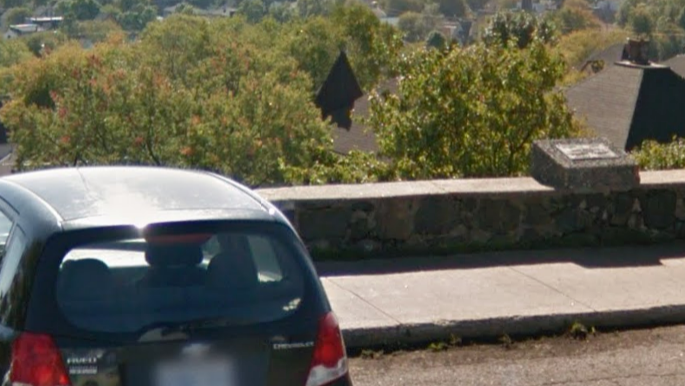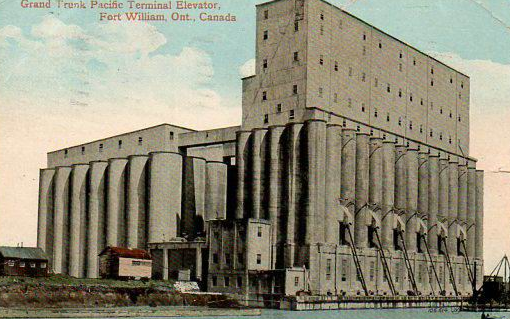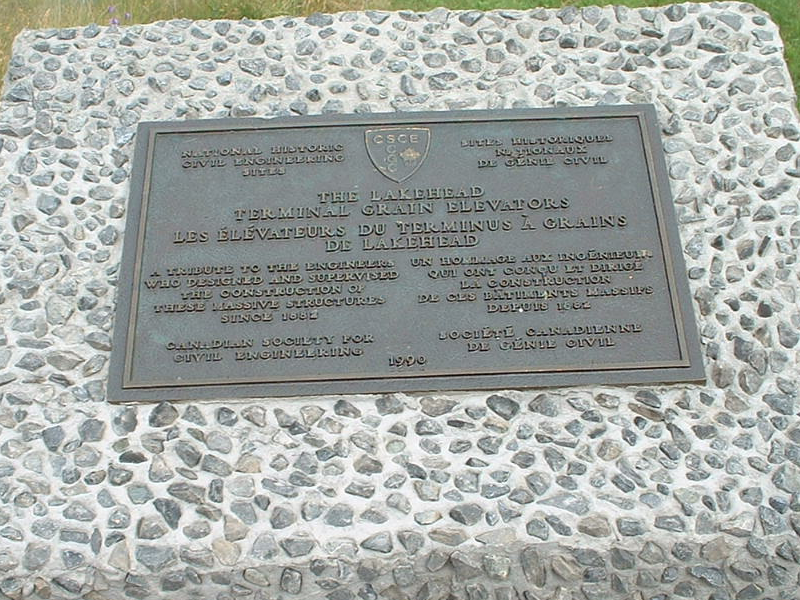

Site Location: Along the waterfront of Thunder Bay, Ontario.
Plaque Location: Lat.: 48° – 26’ – 4” N; Long.: 89° – 14’ – 5” W. (GPS: 48.4343631, -89.2346588). The plaque is mounted on a pedestal on the parapet at the south parking area off Colonel Keene Drive in Hillcrest Park. From the junction of Trans-Canada Highway 11/17 and Red River Road, drive 2 km south east on Red River Road. Turn right (south) on High Street and travel 0.4 km. Turn left on Colonel Keene Drive and park.

Description: Massive grain elevators have been a dominant feature of the waterfront at Thunder Bay since 1883, when the first terminal was under construction. The earliest terminals built by the CPR were constructed in the wooden crib technique on a pile foundation. By the turn of the century, the inadequacies of the crib terminals forced engineers to experiment with new materials and design concepts for terminal elevators. Steel, tile and reinforced concrete all came into use for terminal elevator construction between 1898 and 1903.

Historic Significance: The Lakehead was originally recognized by Cornelius Van Horne of the CPR as the natural site for terminal grain elevators. The building of terminal elevators was deemed to be of national importance in the 1880s to allow grain to be shipped from western Canada by an all-Canadian route. The first shipment of grain arrived by rail from Winnipeg in 1883, two years before the Canadian Pacific Railway reached Vancouver. In 1916, C. D. Howe established his engineering firm in Port Arthur and specialized in the design and construction of terminal grain elevators, including Saskatchewan Pool No. 7. The end of grain transportation subsidies (the ‘Crow Rate’), the construction of grain-handling terminals on the Pacific, and the free-trade agreement with the United States all contributed to ending Thunder Bay’s dominance in Canadian East-West grain trade.



Plaque Wording: National Historic Civil Engineering Sites. CSCE. THE LAKEHEAD TERMINAL GRAIN ELEVATORS. A tribute to the engineers who designed and supervised the construction of these massive structures since 1882. Canadian Society for Civil Engineering. 1990.
SCGC. Sites Historiques Nationaux de Génie Civil. LES ÉLÉVATEURS DU TERMINUS À GRAINS DE LAKEHEAD. Un homage aux ingénieurs qui ont conçu et dirige la construction de ces bâtiments massifs depuis 1882. Société canadienne de genie civil. 1990.
Plaque Unveiling Ceremony: The plaque was unveiled on November 10, 1990 by CSCE President Keith Bowers. Thunder Bay Mayor Jack Masters accepted the plaque on behalf of the City.
Link to Online Documentation: